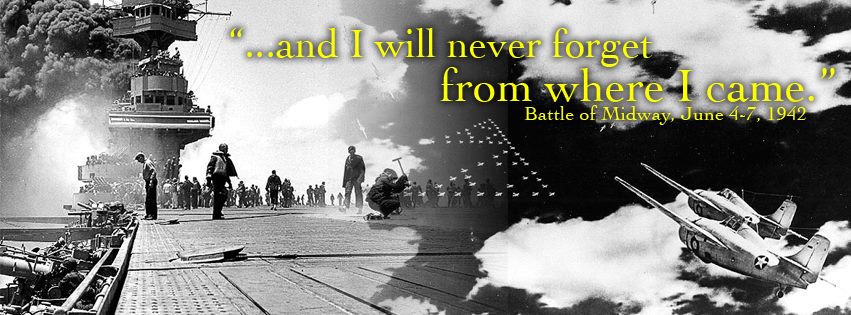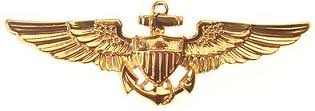Preface to Blown Slick -the series: The evolution of fighter, attack, and strike warfare
All days come from one day, that much you must know.
You cannot change what’s over, but only where you go…
The road that leads to nowhere, the road that leads to you…
Will you find the answer in all you say and do, will you find the answer in you?
Each heart is a pilgrim, each one wants to know, the reasons why the winds die and where their stories go
Pilgrim in your journey you may travel far, for pilgrim its a long way to find out who you are
Pilgrim by Enya

Naval Aviation marks its birthday as 8 May, 1911, but the single day that matters most is June 4th 1942 at the Battle of Midway. If one wears Wings of Gold, therein resides the metric to which you must always aspire.
On the morning of 5 June 1942 the pilots and aircrew of Task Force 16 and 17 would have awakened with the certain knowledge that they were in for another day of battle, but also with the surety that on the previous day, their efforts and bravery had been truly extraordinary with massive results and implications that even a young Ensign could at least begin to comprehend – from a fleet burning at Pearl Harbor six months previously to the destruction of four Japanese carriers (three were destroyed/sunk on the 4th and Hiryu determined to be unsalvageable and to be scuttled that afternoon).
While the Battle of Coral Sea had been the first carrier vs. carrier battle played out at the over-the-horizon distances that carrier-based aircraft allowed, and had indeed thwarted the Japanese movement southward towards Australia, it was essentially a draw. But here at Midway major victory was at hand against a foe who had been running rampant throughout the Pacific. Yes, one whole torpedo squadron from Hornet had been lost and USS Yorktown was dead in the water and listing badly, but the pilots of Enterprise, Yorktown and Hornet had won an incredible victory – a victory that would change the course of the war in the Pacific at a time when overall events for the United States seemed most grim. But on the larger overall scale of WWII, had there been a significant loss of the U.S. carriers, resulting in Midway Island as a Japanese staging base, Hawaii would most likely have been un-defendable leaving the whole American west coast now vulnerable to attack. The “Europe-first” strategy would have disintegrated in the need for west coast defense resources. World War II operations after a U.S. defeat at Midway would arguably have been much different.
My interest in the Battle of Midway and in particular the personal connection with two men who fought it is explained in the second post on Remembered Sky. Admiral Lew Hopkins, commander of the Naval Missile Center, as an Ensign and Dauntless pilot in VB-6 off of the Enterprise was awarded the Navy Cross for his actions on the 4th of June. Petty Officer 3 Pat Patterson was the gunner in the VB-6 Dauntless that was the last plane diving down on the Kaga. I owe much to both men.
It has been said that there have been more books written on this battle than any other throughout history. Seventy-one years later, questions remain unanswered and debate continues on issues such as how many planes were on the decks of the Japanese carriers in that fateful 5 minutes when 3 of the 4 carriers were destroyed, or is the word “incredible” actually appropriate. This notion has been questioned in one of the best books on the battle which approaches from research from the Japanese perspective: Shattered Sword; The Untold Story of the Battle of Midway. The question arises given that during the key portion of the battle, the U.S. Navy fliers were not really “hopelessly outclassed” or outnumbered? A great, tide turning victory, but incredible?
I have noted that the 4th of June always gives me pause to reflect on Naval Aviation and my heritage as a Naval Aviator. I know and am proud from whence a huge portion of my life evolved. The battle is complex and fascinating but truth be told, naval aviation had been building for this day since February 12, 1925 when VF-2 was first assigned to USS Langley to move beyond experimentation and testing to become an operational fleet asset. Developing dive bombing capability was considered the most important task.
That story told in Destined for Glory; Dive Bombing Midway and the Evolution of Carrier Air Power is the starting point for a new series on Remembered Sky that begins here with honoring the men of the Battle of Midway, will discuss evolution of the carrier airwing along with use of terms “fighter pilot” and “attack pilot,” their aircraft and missions, the differences with Air Force usage, and then will stretch into discussion of the design and mission of today’s fourth and fifth generation fighter aircraft. Finally, the series will discuss the possible linkage and lessons learned for today’s anti-access/area denial threats and concepts captured in the Air-Sea Battle concept.
For now let me close this first article in the series with parts of the Foreword from one of the most highly respected books on the Battle of Midway – Walter Lord’s Incredible Victory:
They knew little of war. None of the Navy pilots on one of the carriers had ever been in combat. … Their enemy was brilliant, experienced and all-conquering…they were up against the finest fighting plane in the world.
They had no right to win. Yet they did, and in doing so they changed the course of a war. More than that, they added a new name— Midway— to that small list that inspires men by shining example. Like Marathon, the Armada, the Marne, a few others, Midway showed that every once in a while “what must be” need not be at all. Even against the greatest of odds, there is something in the human spirit— a magic blend of skill, faith and valor— that can lift men from certain defeat to incredible victory.





